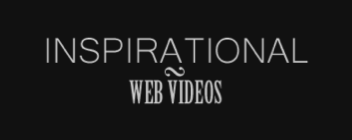Why choose LED?
In 2009 I studied at Nordland College of Art and Film in Northern Norway. I remember that the school had just bought four flat LED lights to make the film productions easier and more creative for us students. The school had already several powerful HMI lights and smaller tungsten lamps, but being able to light scenes in small tight spaces was a difficulty and also to light outside in the beautiful nature of Northern Norway, without having a noisy power generator running in the background. Unfortunately the LEDs back then got rarely used, due to the bad Color Rendering Index (CRI) they had. The light they produced simply looked too green. We needed to use magenta filter to compensate some of the colors that the LED produced, and even then it looked too unnatural.
Now, six years later, the CRI level of affordable LEDs has improved dramatically. Today I’m running my own production company, and LED’s are the only lights we need. It has never been more practical to light a scene like now. The crew can consist of few people, due to low weighted lamps. They are easier to operate because of their size and because they never get warm. In addition, the low price of the LED´s makes the production cost smaller. The technology has made it easier for indie film-makers to light like professionals, and that will eventually let us use more time on the content itself, and less on the equipment. I also think that some actors feel more comfortable when there are less big gear surrounding them when acting a scene. The LEDs are smaller then traditional video lights, and therefore not as “scary” as before.
Stills from the short “Castin Catharsis” using only LED lamps with hight CRI:
I have tried the Aperture Light Storm LS 1S for many different types of scenes, and I get surprised every time I see the footage. It looks clean and natural no matter what the subject is. Due to the high CRI and powerful LED diodes, this lamp is great to use as a main light for larger shots. On my Youtube channel (Andyax) I made a video where I light up a kitchen during night, looking like it’s morning with bright sunlight. Then I tried to make the same scene, with the same setup, looking like the moon was lighting up the whole kitchen. The last test I did, was to light up a part of a forest, to see if I could use it as a main lamp for a scene shot in the forest at night. It worked great! By combining the lamp with a smaller LED with the same high CRI, and a reflector, you may get everything you need to shoot your film. Press “read more” under the video I made about the lamp, to read more :)
What are the potential pitfalls or problems with LED lights in video?
Even though the CRI level of affordable LED lamps has increased, you may be unlucky and get yourself a LED that creates green and unnatural light. So before buying it’s important to be sure that the manufacturer is trustworthy, and that you figure out the CRI value of the lamp. If they don’t write anything about the CRI value in the product specifications, it will probably not produce good light. The CRI value is often what makes the difference from a cheap lamp to a more expensive one. Another weakness of some LED lamps with dimmers, is that they create flickering light when dimming the light. A tip is to look at reviews and tests of the lamp on the internet, and see if someone has noticed it before you. I mentioned that small sized film lamps like the LED´s may help the actors to feel less nervous on set, but maybe it has an opposite effect? What if the actors feel that the production looks to amateurish and that the crew don’t take them serious, because they expected bigger traditional lamps. You never know…
Do you encounter color temperature issues when shooting videos with LEDs? If so, how do you deal with them?
So far, my 5600kelvin LED’s has worked like a charm. Often I use them as main lights, and then add smaller cheap tungsten halogen lamps (3200kelvin) as practical lights for lower color temperature and color contrasts. I will experiment more with color gels to compensate the daylight that the LED produces with other types of light, like sunsets and direct sunlight.
Are there reasons to avoid variable power and variable color temp models?
It may be tempting to buy a variable color temperature LED, because then you can be as flexible as possible on set. The downside is that they often costs quite more then LEDs with one type of color temperature. To save money, you can use color gels to change color temperature instead. I even think it will look more natural to use gels to change the color temperature, then to use LEDs that produce both daylight (5600kelvin) and tungsten light (3200kelvin). Keep in mind that there is a loss of intensity when using gels, so a powerful LED is recommended when using them.
- - - - - -
(Source Article by Anders Øvergaard)






 Post a Comment
Post a Comment
Reader Comments